Nano-Welding of Multi-Walled Carbon Nanotubes on Silicon and Silica Surface by Laser Irradiation
Abstract
:1. Introduction
2. Results and Discussion
2.1. Effects of Substrates
2.2. Nanowelding between Carbon Nanotubes
2.3. Nanowelding between Carbon Nanotubes and Silicon
3. Experimental Set-Up
4. Conclusions
Acknowledgments
Author Contributions
Conflicts of Interest
References
- Iijima, S. Helical microtubules of graphitic carbon. Nature 1991, 354, 56–58. [Google Scholar] [CrossRef]
- Liu, Z.; Kong, X. Dendritic carbon architectures formed by nanotube core-directed diffusion-limited aggregation of nanoparticles. Phys. Chem. Chem. Phys. 2010, 12, 9470–9475. [Google Scholar] [CrossRef] [PubMed]
- Baughman, R.H.; Zakhidov, A.A.; de Heer, W.A. Carbon nanotubes—The route toward applications. Science 2002, 297, 787–792. [Google Scholar] [CrossRef] [PubMed]
- Evanoff, K.; Khan, J.; Balandin, A.A.; Magasinski, A.; Ready, W.J.; Fuller, T.F.; Yushin, G. Towards Ultrathick Battery Electrodes: Aligned Carbon Nanotube—Enabled Architecture. Adv. Mater. 2012, 24, 533–537. [Google Scholar] [CrossRef] [PubMed]
- De Volder, M.F.L.; Tawfick, S.H.; Baughman, R.H.; Hart, A.J. Carbon Nanotubes: Present and Future Commercial Applications. Science 2013, 339, 535–539. [Google Scholar] [CrossRef] [PubMed]
- Guo, J.Y.; Xu, C.X.; Hu, A.M.; Shi, Z.L.; Sheng, F.Y.; Dai, J.; Li, Z.H. Welding of gold nanowires with different joining procedures. J. Nanopart. Res. 2012, 14, 1–12. [Google Scholar] [CrossRef]
- Postma, H.W.C.; Jonge, M.; Yao, Z.; Dekker, C. Electrical transport through carbon nanotube junctions created by mechanical manipulation. Phys. Rev. B 2010, 62, R10653–R10656. [Google Scholar] [CrossRef]
- Jang, I.; Sinnott, S.B. Molecular dynamics simulation study of carbon nanotube welding under electron beam irradiation. Nano Lett. 2004, 4, 109–114. [Google Scholar] [CrossRef]
- Banhart, F. The formation of a connection between carbon nanotubes in an electron beam. Nano Lett. 2001, 1, 329–332. [Google Scholar] [CrossRef]
- Yang, X.; Han, Z.; Li, Y.; Chen, D.; Zhang, P.; To, A. Heat welding of non- orthogonal X-junction of single-walled carbon nanotubes. Phys. E 2012, 46, 30–32. [Google Scholar] [CrossRef]
- Meng, F.; Shi, S.; Xu, D.; Yang, R. Size effect of X-shaped carbon nanotube junctions. Carbon 2006, 44, 1263–1266. [Google Scholar] [CrossRef]
- Piper, N.; Fu, Y.; Tao, J.; Yang, X.; To, A. Vibration promotes heat welding of single-walled carbon nanotubes. Chem. Phys. Lett. 2011, 502, 231–234. [Google Scholar] [CrossRef]
- Meng, F.; Shi, S.; Xu, D.; Yang, R. Multiterminal junctions formed by heating ultrathin single-walled carbon nanotubes. Phys. Rev. B 2004, 70. [Google Scholar] [CrossRef]
- Hu, A.M.; Zhou, Y.; Duley, W.W. Femtosecond Laser-Induced Nanowelding: Fundamentals and Applications. Open Surf. Sci. J. 2011, 3, 42–49. [Google Scholar] [CrossRef] [Green Version]
- Hu, A.M.; Guo, J.; Alarif, H.; Patane, G.; Zhou, Y.; Compagnini, G.; Xu, C. Low Temperature sintering of Ag nanoparticles for flexible electronics packaging. Appl. Phys. Lett. 2010, 97. [Google Scholar] [CrossRef]
- Kim, S.J.; Jang, D.J. Laser-induced nanowelding of gold nanoparticels. Appl. Phys. Lett. 2005, 86. [Google Scholar] [CrossRef]
- Hu, A.M.; Peng, P.; Alarifi, H.; Zhang, X.Y.; Guo, J.Y.; Zhou, Y.; Duley, W.W. Femtosecond laser welded nanostructures and plasmonic devices. J. Laser Appl. 2012, 24. [Google Scholar] [CrossRef]
- Kichambare, P.D.; Chen, L.C.; Wang, C.T.; Ma, K.J.; Wu, C.T.; Chen, K.H. Laser irradiation of carbon nanotubes. Mater. Chem. Phys. 2001, 72, 218–222. [Google Scholar] [CrossRef]
- Chico, L.; Crespi, V.H.; Benedict, L.X.; Louie, S.G.; Cohen, M.L. Pure Carbon Nanoscale Devices: Nanotube Heterojunctions. Phys. Rev. Lett. 1996, 76. [Google Scholar] [CrossRef] [PubMed]
- Fulkerson, W.; Moore, J.P.; Williams, R.K.; Graveb, R.S.; Mcelrqy, D.L. Thermal conductivity, electrical resistivity, and seebeck coefficient of silicon from 100 to 1300 K. Phys. Rev. 1968, 167. [Google Scholar] [CrossRef]
- Schafft, H.A.; Suehle, J.S.; Mirel, P.G.A. Thermal conductivity measurements of thin-film silicon dioxide. In Proceedings of IEEE 1989 International Conference on Microelectronic Test Structures, Edinburgh, UK, 13–14 March 1989; IEEE: Piscataway, NJ, USA, 1989; Volume 2, pp. 121–125. [Google Scholar]
- Chen, D.Y.; Zhang, B.L. Preparation and growth mechanism of β-Si3N4 rod-like crystals by combustion synthesis. Mater. Lett. 2002, 57, 399–402. [Google Scholar] [CrossRef]
- Cai, H.; Tian, S.; Li, J.; Xu, J. Investigation on the combustion synthesis of Si3N4/SiC composite powders by chemical stimulation. J. Chin. Ceram. Soc. 2003, 31, 316–319. [Google Scholar]
- Li, J.; Li, K.; Wang, Y.; Yan, D.; Duan, G. Effect of SHS processing parameters on preparation of silicon nitride powder. Bull. Chin. Ceram. Soc. 2007, 26, 252–255. [Google Scholar]
- Xie, T.; Ye, M.; Wu, Y.; Zhang, L. Fourier transform infrared spectroscopy and Raman spectrum analyses of monocrystalline α-Si3N4 nanowires. J. Chin. Ceram. Soc. 2008, 36, 44–53. [Google Scholar]
- Nakashima, S.; Harima, H. Raman investigation of SiC polytypes. Phys. Status Solidi 1997, 162, 39–63. [Google Scholar] [CrossRef]
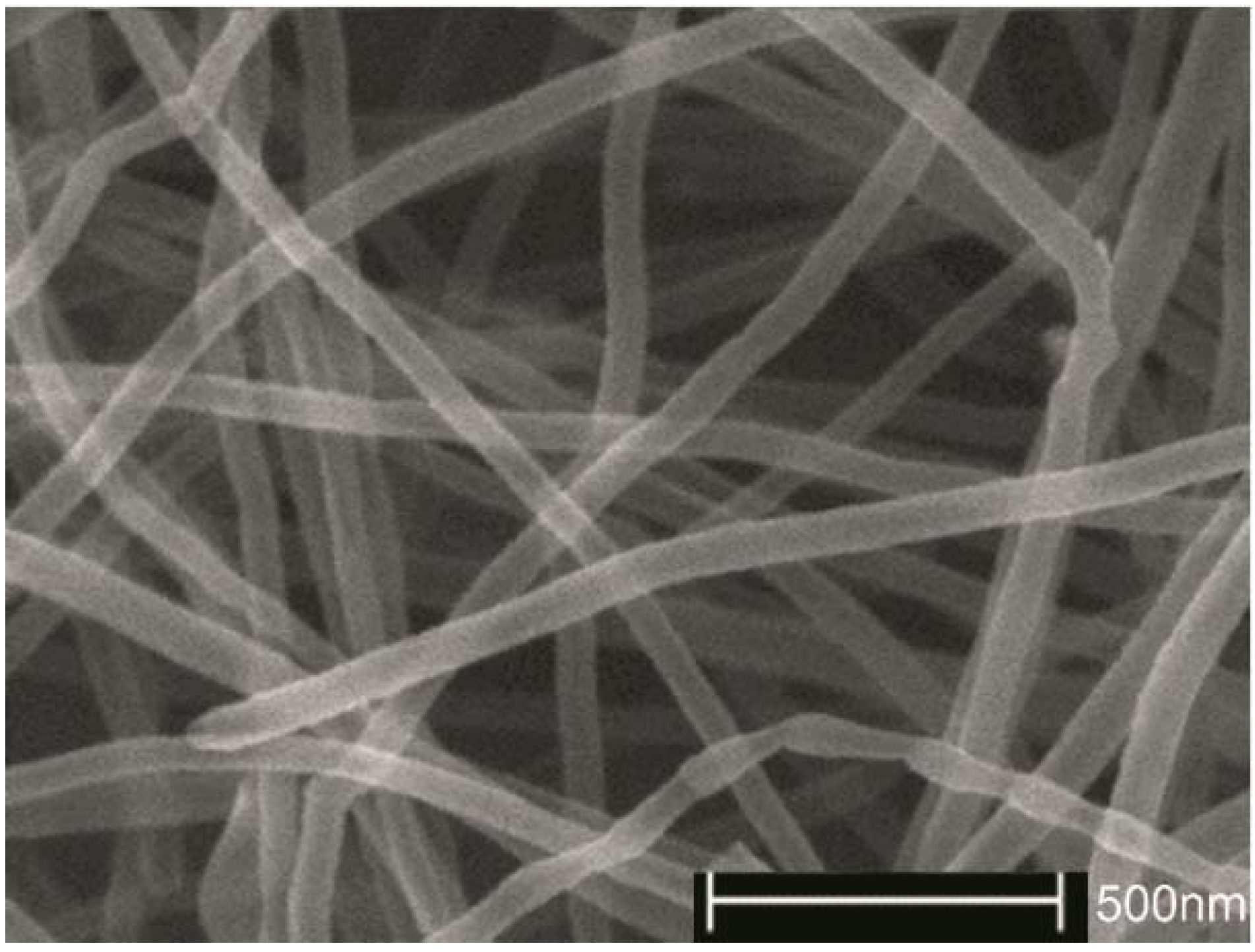
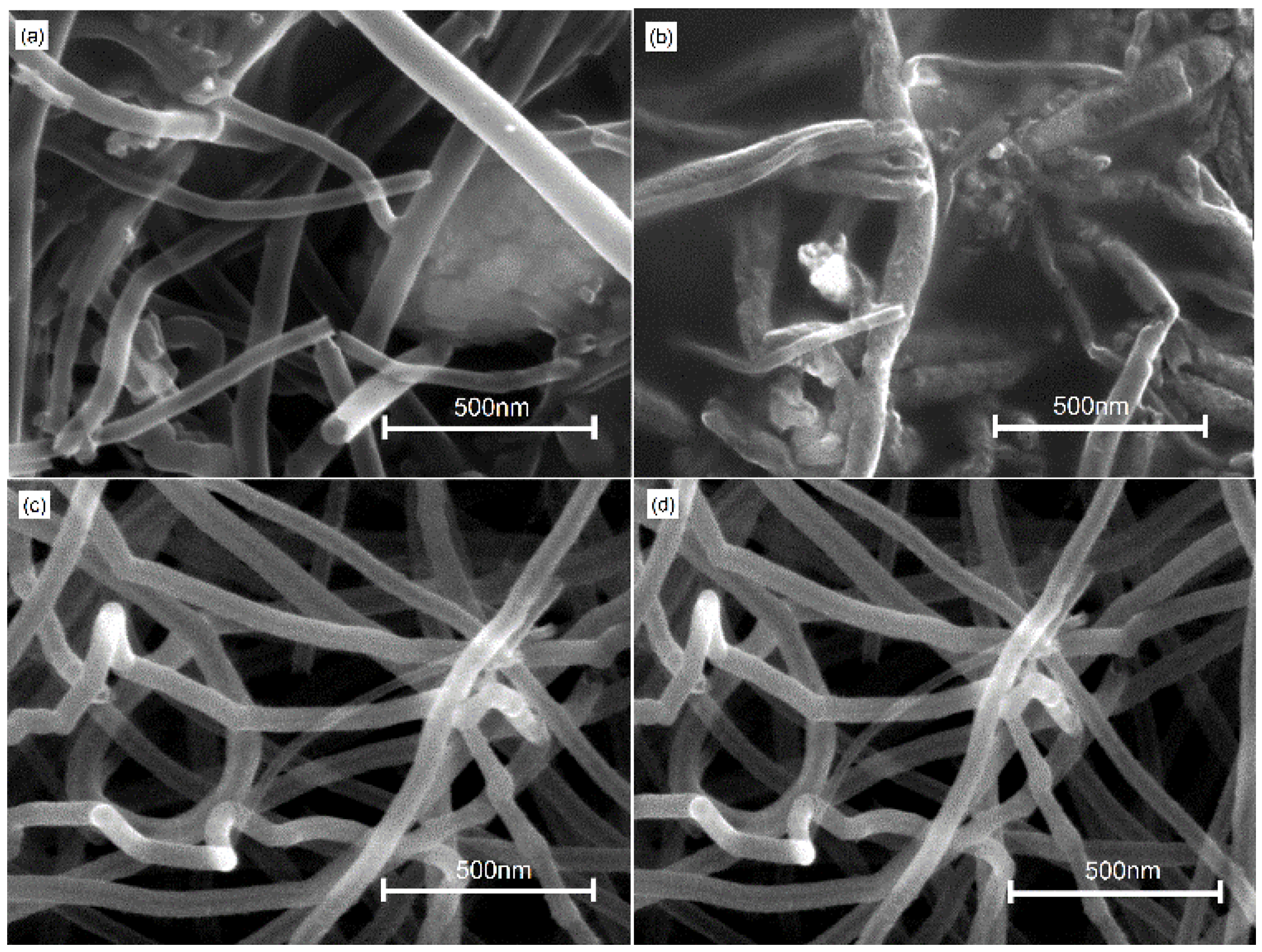
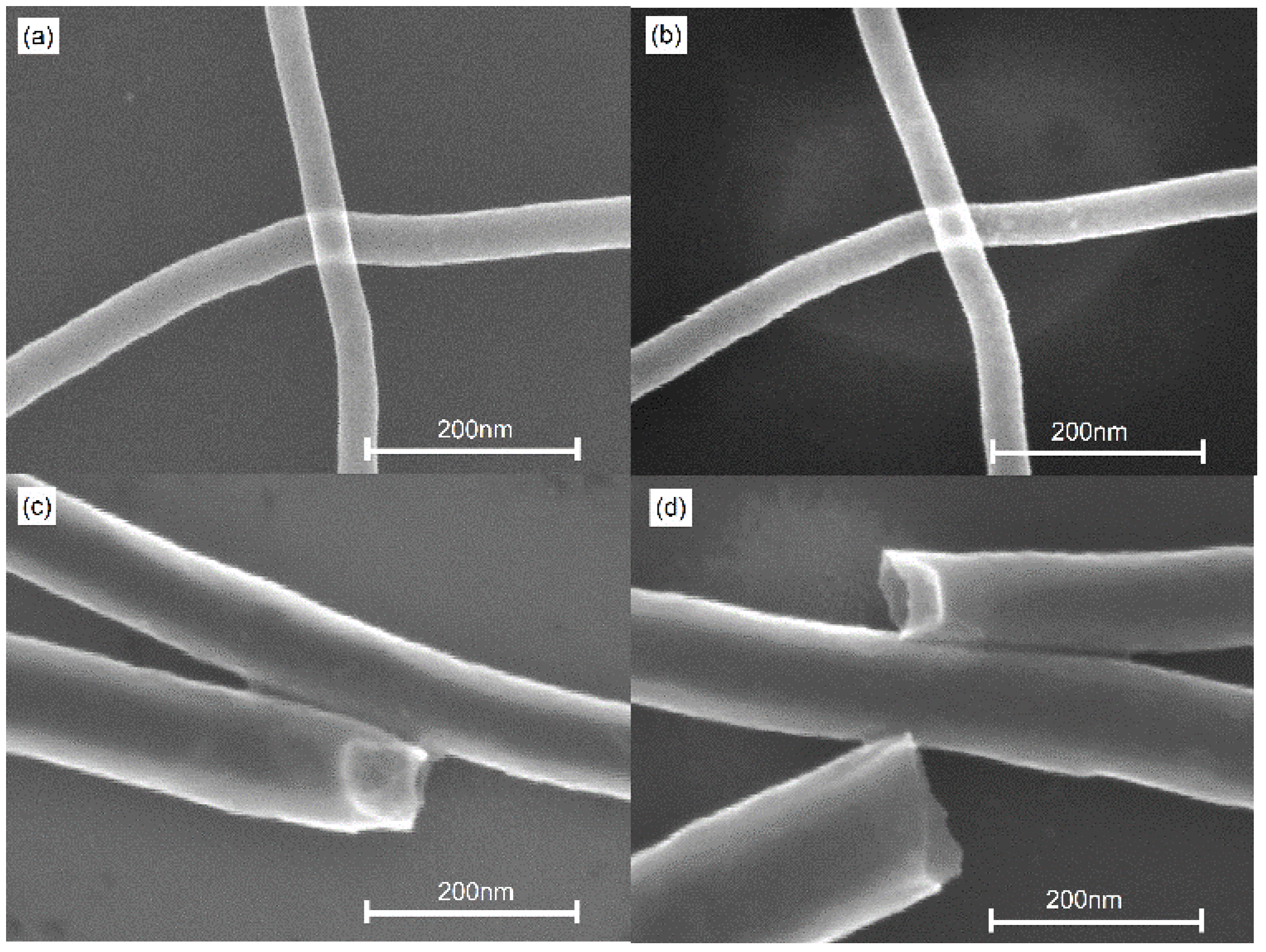
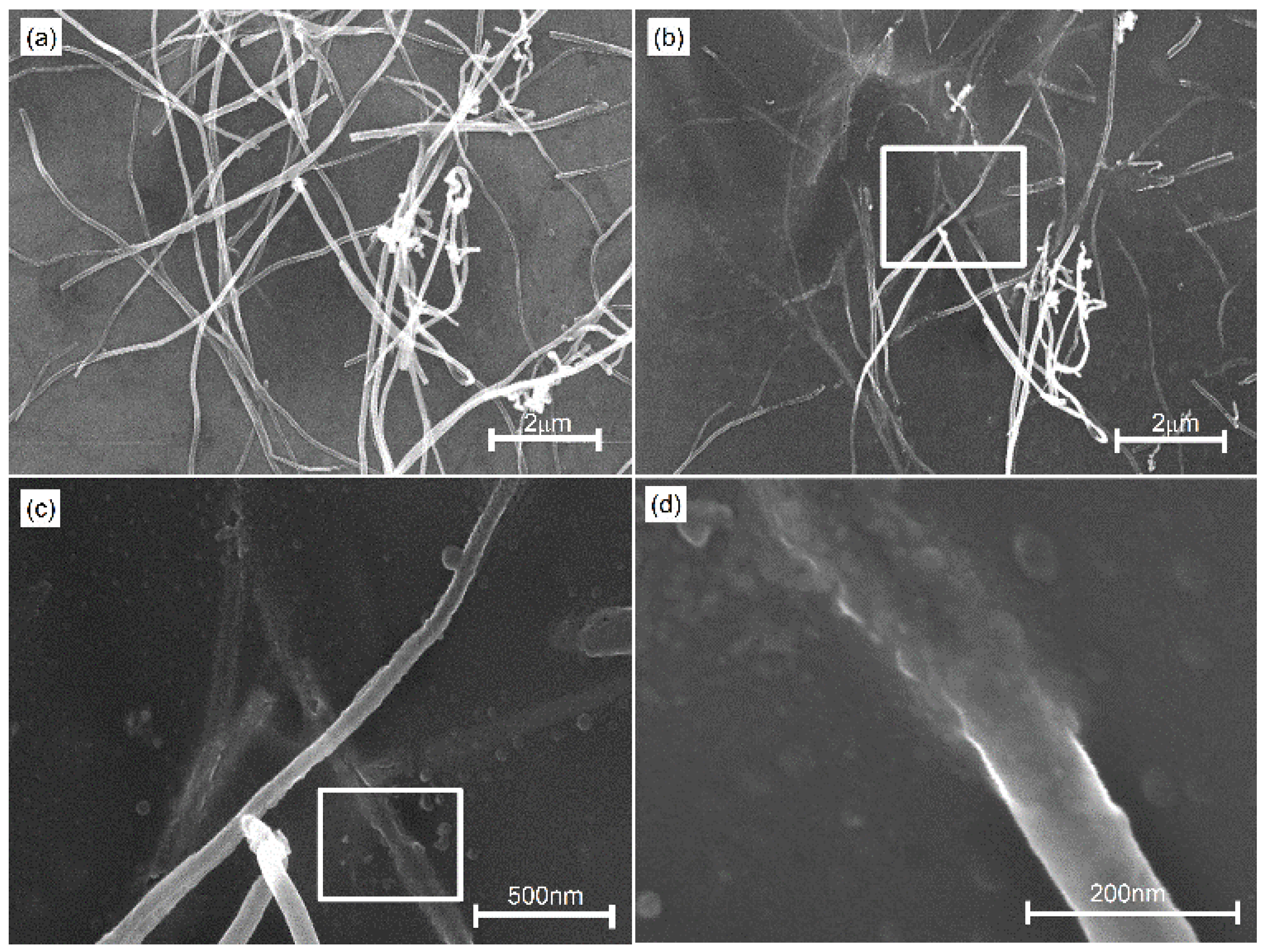
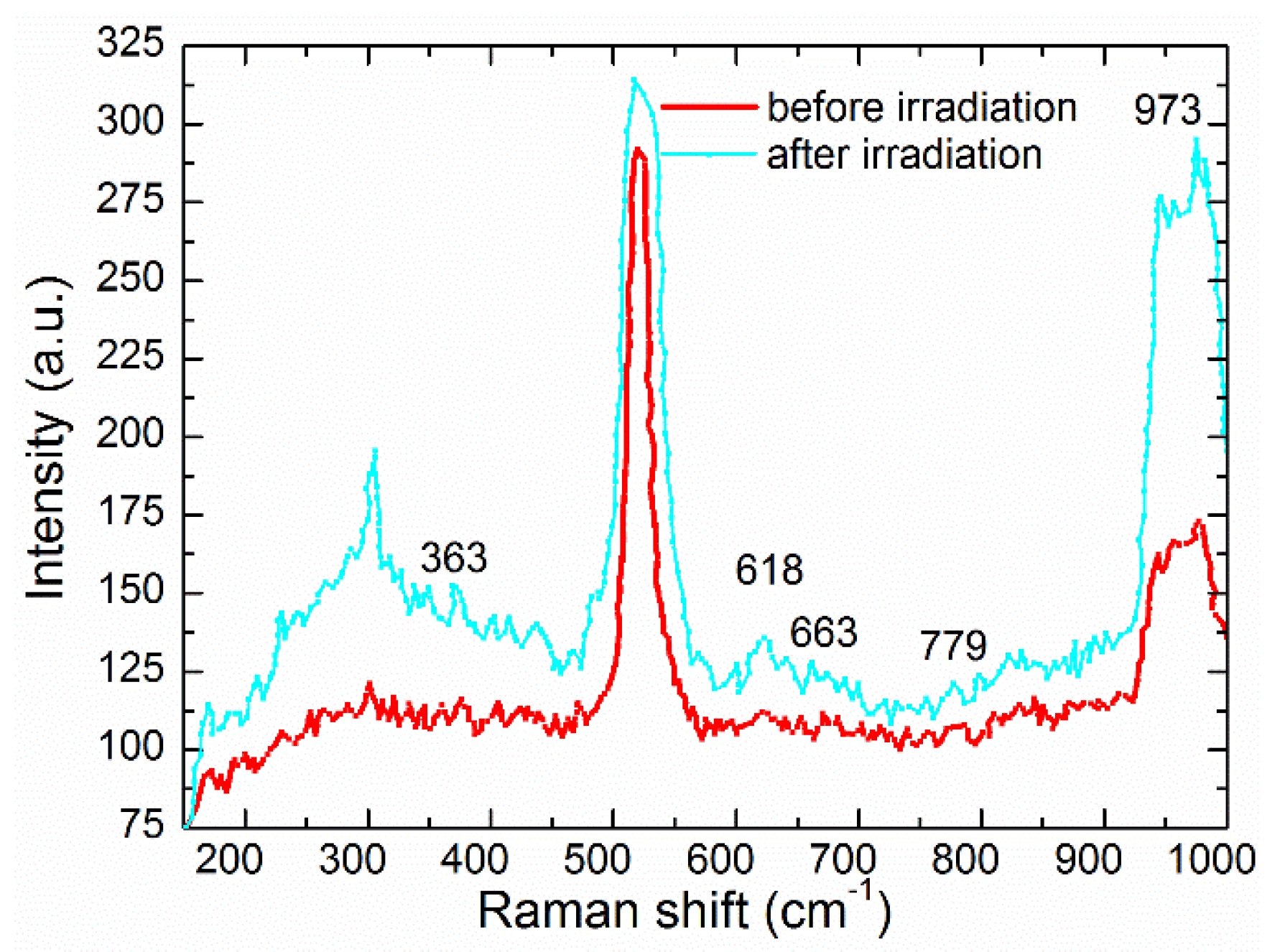
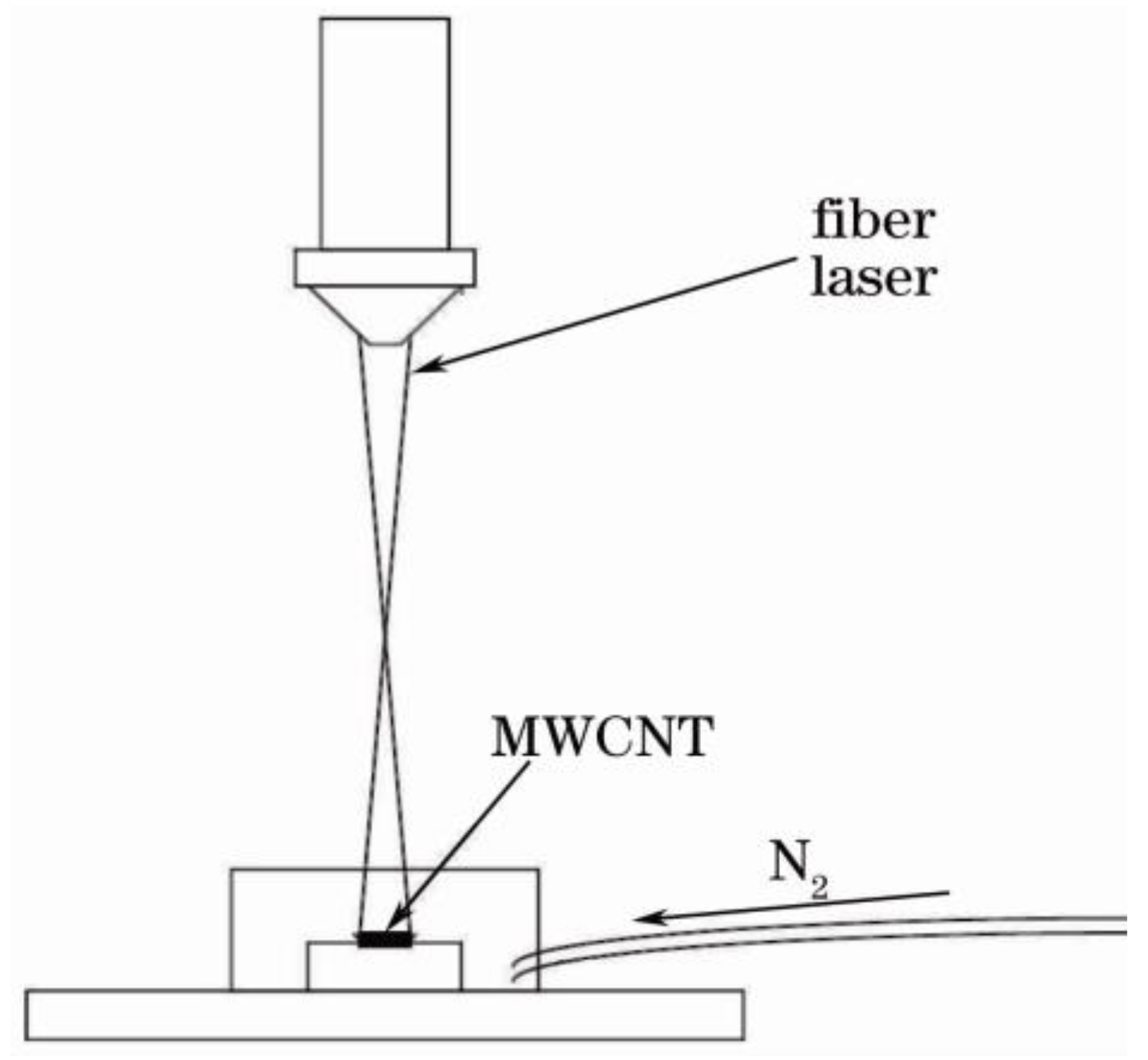
© 2016 by the authors; licensee MDPI, Basel, Switzerland. This article is an open access article distributed under the terms and conditions of the Creative Commons by Attribution (CC-BY) license (http://creativecommons.org/licenses/by/4.0/).
Share and Cite
Yuan, Y.; Chen, J. Nano-Welding of Multi-Walled Carbon Nanotubes on Silicon and Silica Surface by Laser Irradiation. Nanomaterials 2016, 6, 36. https://doi.org/10.3390/nano6030036
Yuan Y, Chen J. Nano-Welding of Multi-Walled Carbon Nanotubes on Silicon and Silica Surface by Laser Irradiation. Nanomaterials. 2016; 6(3):36. https://doi.org/10.3390/nano6030036
Chicago/Turabian StyleYuan, Yanping, and Jimin Chen. 2016. "Nano-Welding of Multi-Walled Carbon Nanotubes on Silicon and Silica Surface by Laser Irradiation" Nanomaterials 6, no. 3: 36. https://doi.org/10.3390/nano6030036
APA StyleYuan, Y., & Chen, J. (2016). Nano-Welding of Multi-Walled Carbon Nanotubes on Silicon and Silica Surface by Laser Irradiation. Nanomaterials, 6(3), 36. https://doi.org/10.3390/nano6030036




